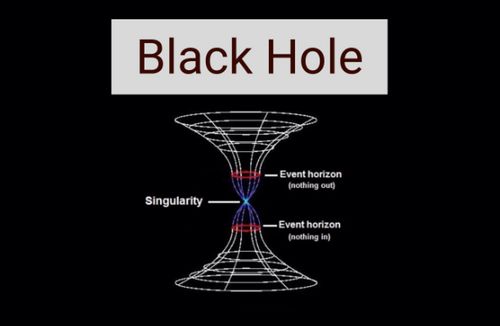Black holes: is anything more mysterious?
Jun 27, 2022 · 2 mins read
0
Share
A black hole is one of the most mysterious objects in the universe. It is a region in space where the force of gravity is powerful and even light cannot escape it. It pulls in all the matter around it and squeezes into a tiny space.
Save
Share
How are black holes formed? When a big star is dying, the center of the star falls in upon itself or collapses. This causes a supernova. A supernova is an exploding star that blasts part of the star into space, forming black holes.
Save
Share
Can humans see a black hole? People cannot see black holes as no light can get out of them. They are invisible. Scientists use special telescopes and study black holes based on how stars close to black holes act differently than other stars.
Save
Share
Strong gravity affects the stars and gas around the black hole. Scientists study stars to find out if they are flying around, or orbiting, a black hole. When a black hole and a star are close together, high-energy light is made which is observed with telescopes.
Save
Share
Scientists study matter around black holes like Accretion disks and Quasars.
Accretion disks - A disk of particles that form when gases and dust fall towards a black hole.
Quasars - Jets of particles that blast out of supermassive black holes.
Save
Share
Event horizon and singularity
The boundary of a black hole is called an “event horizon” beyond which we can't see. It is a point of no return. A singularity is an infinitely small & dense point at the center of a black hole where space, time, & the law of physics don’t apply.
Save
Share
Different types of black holes-
Supermassive - They are the largest, having a mass of more than 1 million suns together. Every large galaxy seems to contains a supermassive black hole at its center. In the Milky Way galaxy, it is Sagittarius A.
Save
Share
Stellar - Its mass can be up to 20 times more than the mass of the sun. The other two black holes are intermediate and miniature. But the most common are stellar and supermassive.
Save
Share
In 1971, the first black hole was discovered called Cygnus X-1, located within the Milky Way in the constellation of Cygnus, the Swan. Since then, xxx number of black holes have been identified.
Save
Share
Final Note: The possibility of "stupendously large black holes," or SLABs, black holes being naked or with a horizon event, or just fuzzballs is in research. Discoveries like the closest pair of black holes to earth will help us understand black holes and the mystery around them.
Save
Share
0
